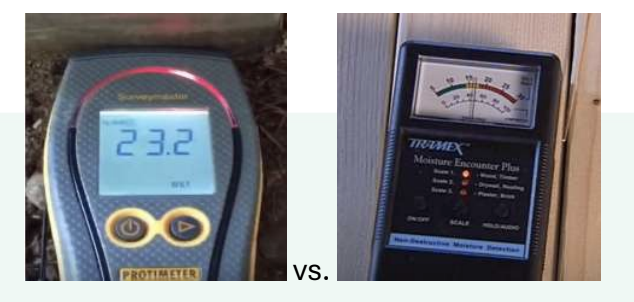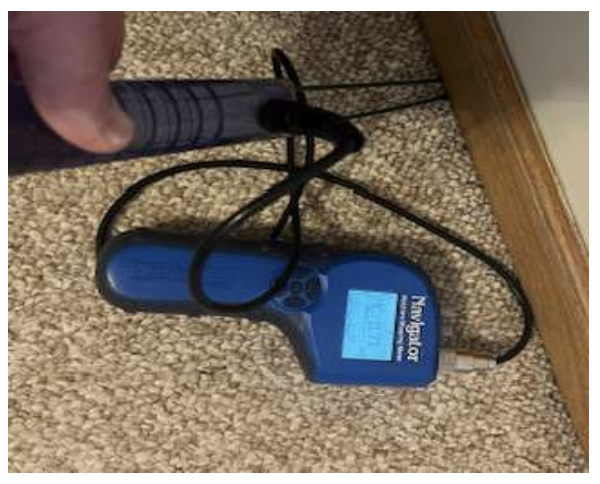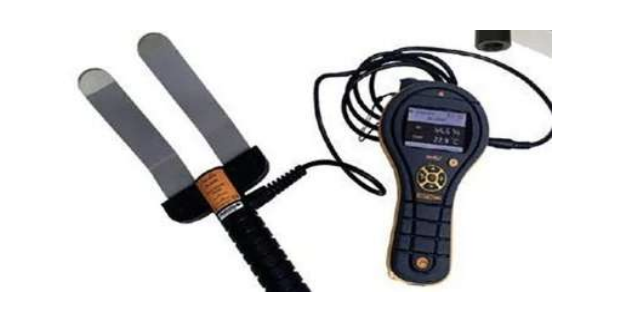Why Penetrating Moisture Meters Are Best

Why Penetrating Moisture Meters Are Best


Meet Ed
Instructor Ed Jones has over 30 years of experience in theindustry, has the title of MasterWater Restorer, is an Institute ofInspection Cleaning andRestoration Certification (IICRC)-approved instructor, and hasserved on the S500-2021consensus body committee todevelop the most recent standard.
In today’s water mitigation industry, it is very common to see technicians using non-penetrating meters to take all their moisture readings, instead of penetrating moisture meters, due to the ease of use without putting holes in the material testing.
This occurs even when taking readings on wood sill plates and wood subfloors! In my role as a subject matter expert in water damage restoration and sometimes expert witness in lawsuits, I have learned the importance of providing conclusive evidence that you reached your drying targets and left materials at an acceptable moisture level that would inhibit the growth of microorganisms.
This is best accomplished by placing two metal pins into the material and using electrical conductivity to show moisture content. Also, electrical moisture meters are typically only calibrated for wood materials and the penetrating moisture meter is the only one that gives you an actual moisture content compared to kiln dried wood.
Regarding leaving holes in drywall when taking penetrating readings, any holes left in drywall are very small and easily repaired with spackle, if there is a concern. I rarely hear complaints on meter holes in the drywall and if there is one it is easy to fix.
Non-penetrating moisture meters can give you false-positives and only provide qualitative readings, not quantitative readings. In other words, it only lets you compare two readings of the same material but doesn’t give you actual moisture content. Some non-penetrating moisture meters can send an electrical capacitance signal a full 1”-1 ¼” deep, where others only go about ¼”- ½” deep into the material. These types of meters can give you a false positive reading from metal corner bead, foil-backed insulation, electrical plumbing lines or electrical conduits, as well as surface moisture.
Because of this I recommend the use of non-penetrating moisture meters to “scan” the potentially wet materials during the initial inspection and then follow up with a penetrating moisture meter on the materials that show they might be wet to confirm their moisture content.

If you are trying to prove you left the material in a state that will not promote microbial growth from that water loss occurrence you need to use penetrating moisture meters and make sure you take photos of the final readings labeled properly (e.g., Living Room/Wall 1/Drywall/ 20%/Day 3). That photo can also be used to show the type/brand/model moisture meter used.
The IICRC S500-2021 states the restorer should use the same meter at the same location throughout the drying project to prevent inconsistencies in measurements. It is the responsibility of the restorer to know how to use their meters properly and to document all moisture content readings accurately.
As I review moisture content readings, as well as psychrometric readings daily, I have found that moisture content readings are typically not recorded properly and that non-penetrating moisture meters are used too much. I call non-penetrating moisture meters the “lazy man’s meter” for that reason, although I concede that there are materials like sheet vinyl, vinyl wallpaper or hardwood flooring where you need the non-penetrating meter.

There are now great options when it comes to penetrating and non-penetrating moisture meters, you need both! Also, they have insulated pins of different lengths to obtain readings in hard-to-reach areas, like sill plates behind baseboards or under base cabinets.

Some of the latest moisture meters allow you to timestamp and geotag your readings, while having the ability to save unlimited number of readings. Some are Bluetooth capable. Stay at the top of your game while protecting you and your company by using the best penetrating and non-penetrating moisture meters possible.




